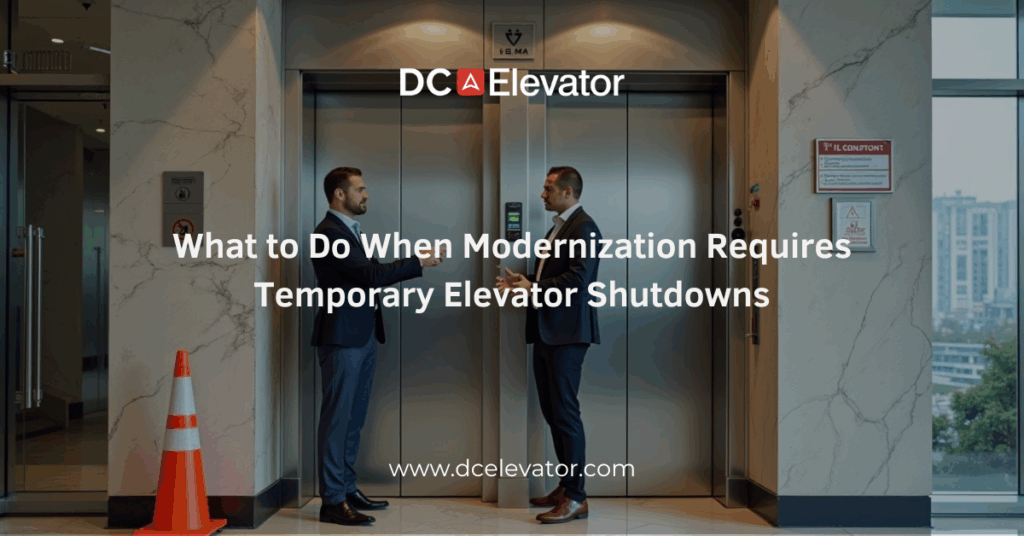Few things cause more disruption in a building than an elevator shutdown—especially when it’s part of a planned modernization. For property owners, facility managers, and tenants, elevator downtime can create challenges in accessibility, scheduling, and satisfaction. However, these temporary shutdowns are a necessary part of ensuring long-term reliability and safety.
While modernization brings lasting benefits—like smoother rides, improved energy efficiency, and compliance with updated safety codes—knowing how to manage the shutdown period is key to minimizing inconvenience. With the right preparation and communication strategy, building owners can keep operations running smoothly and maintain tenant confidence throughout the process.
Understanding Why Temporary Shutdowns Are Necessary
Modernization often involves replacing major components such as controllers, door systems, or cabs—work that simply can’t be completed while the elevator is in operation. Safety regulations also require the unit to be taken offline to protect both workers and passengers.
Depending on the project scope, shutdowns may last anywhere from a few days to several weeks. Planning ahead with your elevator service provider ensures you understand the timeline, scope, and what to expect each step of the way.
Communicate Early and Clearly with Tenants and Staff
Transparent communication is one of the most effective ways to manage frustration during a shutdown. Notify tenants well in advance and include:
-
The start and expected completion dates
-
A clear reason for the shutdown (e.g., modernization, safety upgrade)
-
Alternative accessibility options for affected floors or areas
-
A contact person for any questions or special accommodation requests
Posting signage in lobbies, elevators, and shared spaces keeps everyone informed. Regular progress updates help maintain trust and show that the project is being handled responsibly.
Coordinate Logistics to Reduce Disruption
Facility managers can take several proactive steps to ease the impact:
-
Schedule work during low-traffic periods, such as weekends or holidays.
-
Arrange temporary access solutions, like service elevators or ramps, if available.
-
Work closely with the elevator contractor to optimize scheduling and minimize downtime.
-
Plan for increased staffing or assistance for individuals with mobility needs.
For multi-elevator buildings, phasing modernization (working on one car at a time) allows at least partial service to remain available.
Ensuring Safety During the Process
Safety should remain the top priority. Ensure that only authorized personnel enter work zones and that warning signs and barriers are in place. Building management should also confirm that the elevator company is following all applicable safety and inspection standards before reactivating the unit.
Once modernization is complete, request a full demonstration of new features and any updated operating instructions to ensure tenants and staff are comfortable with the changes.
Temporary elevator shutdowns may cause short-term inconvenience, but they pave the way for safer, more efficient, and reliable service for years to come. With proactive communication, careful planning, and the right modernization partner, you can make the process smooth for everyone involved.
If your building is planning an elevator modernization and you want to minimize downtime and tenant impact, contact us today. Our team can guide you through scheduling, communication strategies, and modernization planning to ensure your upgrade is both efficient and stress-free.
